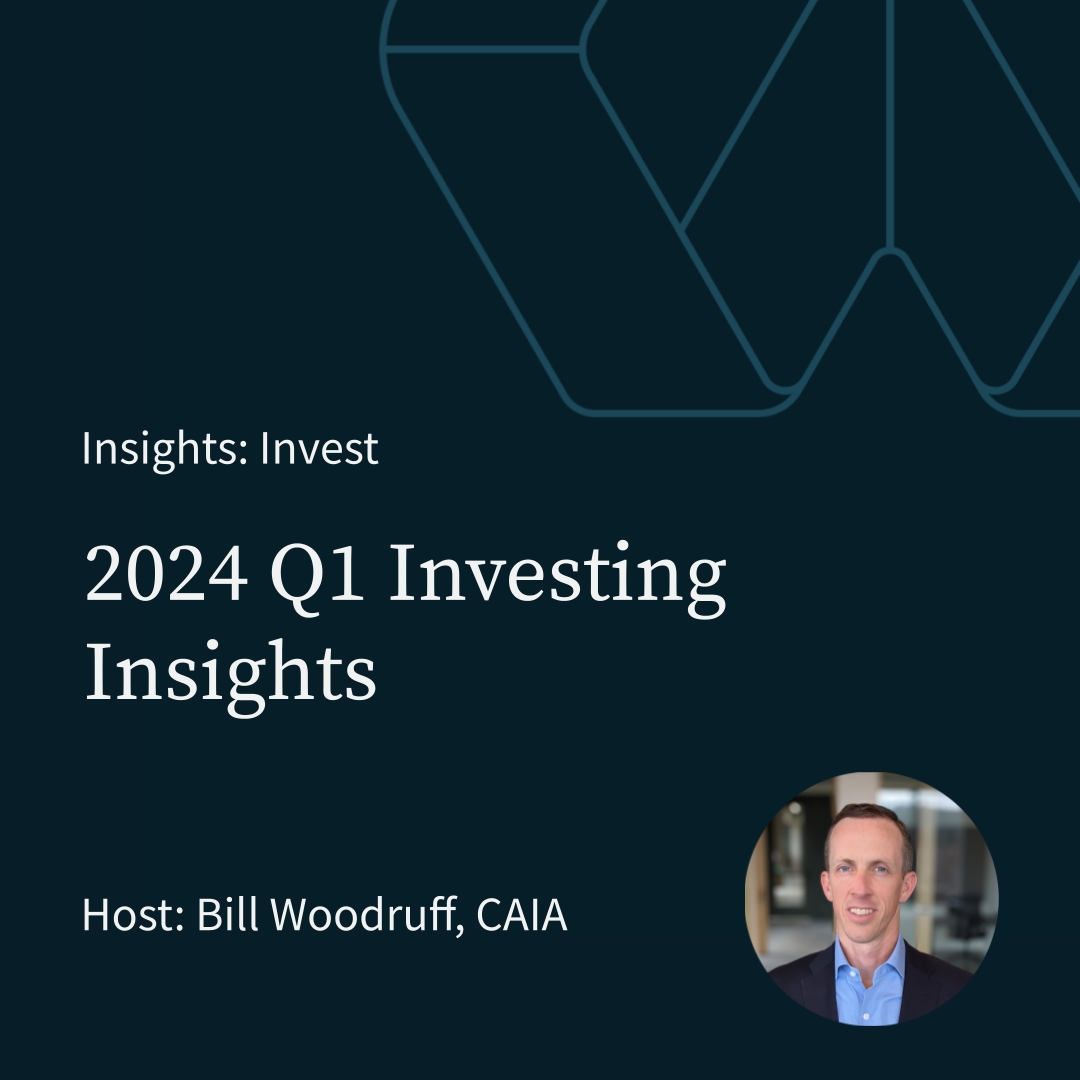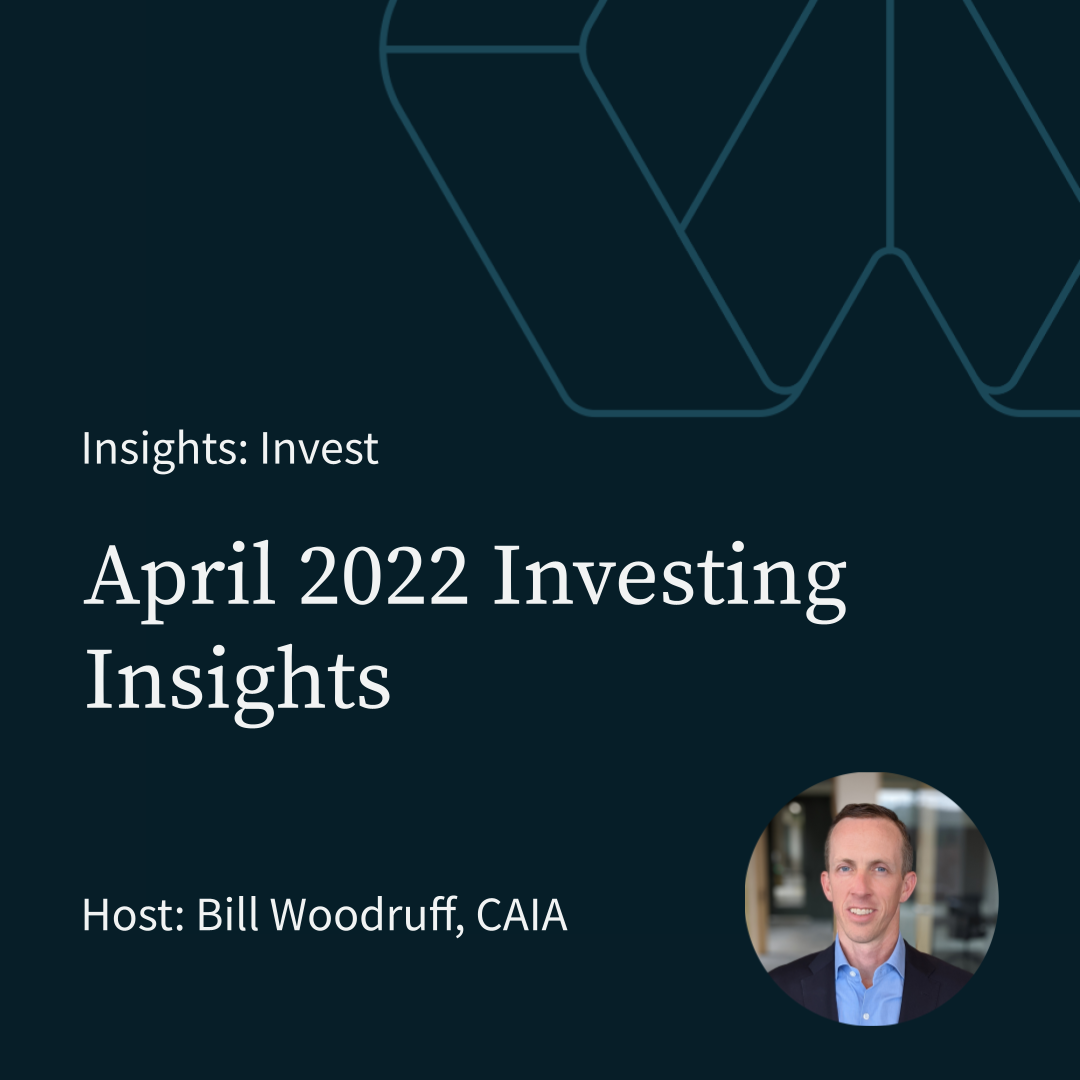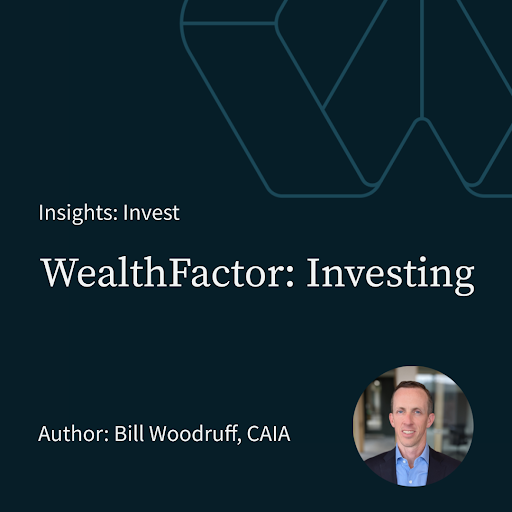June 2020 Review Replay
decline, investors, prices, little bit, investing, relative, significant, portfolio, factor, recession, shutdowns, equity markets, risk, equities, years, economy, stocks, predictive, asset, economic activity
Transcript
Good afternoon and welcome.
00:03
Today I'll be going through the June 2020. review for wealth factor. Before I get too far in let me share a few words for compliance purposes. This call is for informational purposes only and may be recorded statements made during this call or the opinions of the speaker and are subject to risk and uncertainty some of which are significant in scope. And by their very nature beyond the control of wealth factor. There can be no assurance that says statements will prove to be accurate and actual results in future events could differ in a material way from said statements.
00:37
Historical results are not necessarily indicative of future performance. My name is Bill Woodruff. I founded wealth factor in 2017. I believe that investors deserve better than the business model being sold by the Average advisor and have created the wealth factor differently largely leveraging technology for the benefit of investors and aligning and investment philosophy that is
01:15
simple, disciplined and repeatable to that technology in those processes. I've been investing for over 20 years now and have a background both in owning and operating small private investment advisors, as well as spending time and senior in a senior role at a publicly traded asset manager. Well factor is a Lake Oswego based investment advisor we do primarily customized, plan oriented investment advice, building and managing portfolios specific to each of our clients, utilizing primarily index based Investing. We when providing our service accounts are held in each individual clients name through third party custodians. We charge a point three 5% fee on the asset so we manage up to 10 million and point 1% on assets over 10 million. Well factor is all centered around a philosophy which is called risk smart. There are three core components. portfolio smart, which is largely a reference to a structure is mostly about avoiding things like layers of management, complex investment structures or strategies, things like picking and timing stocks or sectors or and timing markets.
02:52
The second element is fee smart. This starts with our point three 5% fee and is all also influenced by our simple and efficient index based approach to investing. The last component for rich smart is tax smart. I believe that
03:14
intelligent and proactive Tax Management is likely the single greatest area. A professional investment advisor can add value for their clients and shouldn't be an afterthought. A quick overview of what we discussed in April and May in and what and coming out of the significant declines in equity markets, thanks to the government shutdowns linked to the Coronavirus we saw we had in April and May a significant be like price recovery. This is large list can largely be attributed to swift and significant action by both the Federal Reserve as well The federal government to be supportive of the economy as well as explicitly asset prices. In the June review, we will spend a little bit of time discussing what has been maybe not fully a pause in that V shaped recovery. But, you know, maybe a slowing in terms of asset price recovery. And, you know, in that it really is a backdrop of a significant number of investors believing that that there's a almost for sure going to be a future decline because of the issues associated with the drop in economic activity. spend a little bit of time going over and looking at the, what has been a continued divergence between this types of stocks, both in terms of style, growth versus value as well as size and spend some time talking and providing a bit longer context and perspective in regards to both recessions. As well as declines in equity markets. And then lastly, Ben just a little bit of time looking at the environment for fixed income, and where market interest rates are and have remained. First here we have a chart that's looking at a graph that's looking at economic recessions. And this is these are these numbers are looking at real GDP. So the y axis has the length of the recession, zero to as many as five years on the chart. And then it's looking back going to 1910 all the way to current capturing the Great Depression, which is the first circle we see the size of the circle as reference, a visual reference to the severity of the decline in GDP. And so we see that the Great Depression lasting in almost four years, and a significant decline in real GDP or economic, economic activity. You could I know You know, this is useful information because it is the US economy. Although, you know, I think it's important to note that the size of the US economy was dramatically smaller and what I would consider to be a more emerging stage than it is today. If we look at the variety of declines or recessions between the Great Depression and the current recession, there's a couple takeaways. There has not been a any recession that's lasted longer than two years. And then if we fast forward to today, we can see even though this isn't necessarily over yet, that this has been a very short but severe decline in economic activity. So consistently, I don't look to charts and data to try to glean something that might give me a predictive insight. Don't believe that we can predict what might happen tomorrow in asset prices, but through perspective can gain I guess, more comfort to make prudent structural
07:17
investment decisions. This transitions from economy to actual s&p 500 prices. And it looks at declines or pullbacks since the financial crisis. And so it's looking at approximately a decade. And I think it's a lot of investors can forget very quickly in a period where equities are doing well, fairly meaningful declines. So we look back and say, you know, coming out of the financial crisis, there was a 16% decline, and then in 2011, and 19% decline, and then you're in 2018, you know, in your 20% decline, and so on. is certainly the 20 the decline going through March 23 of this year as a greater severity. But I think it's a useful reminder to say, you know, these sorts of declines happen persistently. And there there should be expected. And we'll I think the probability that we'll forget this one is probably less, given its severity, and especially the psychological impact that the shutdown has happened on so many Americans. But, and in the grand scheme of just the prior 10 years, the magnitude of this decline, especially in light of the fee shape, price recovery, is very modest relative to the returns that had investors who have ignored all of these sorts of declines have have been able to capture I will share this graph frequently. It's it's the long run so this is about 120. Two years of s&p performance. And what it does is really puts that this recent decline in proper perspective as well, as you know, all of the historic major declines. You know, absolutely. Huge declines have real ramifications, especially for investors, who are you about to utilize their portfolio. But practically speaking for as long as it's used in the right way with the proper time horizon, the log scale on this doesn't fully provide that proper perspective unless you think about a little bit but you know that that starting point is $10. And the ending point is 1000. And so long, without a log scale, this would look like a hockey stick. You wouldn't see any of the you wouldn't have any perspective in the prior periods. But in this log scale format, it does. I think, much better represent how immaterial many large declines are relative to the long term potential for being invested in and exposed to a diverse portfolio of US stocks over time.
10:18
Again, this isn't predictive about what's going to happen tomorrow. And I'll be, you know, quick to identify that the there are plenty of cases, I think most of them are demographic that would suggest that future equity prices in the US will not meet what they were over the long run historic averages. But I would say that that probably is doesn't matter and should be thought of relative to your investing choices. And so for a significant amount of time, historically, interest rates, Treasury interest rates were materially higher than they are today. And so, really, if let's say the long term historical average here is nine, but the long term historical 10 year Treasury yield was five, an investor was getting 4% over effectively what they could get without taking credit risk. And so, you know, if you apply that same sort of thinking forward if the 10 year Treasury is at point, six 6%, you know, really a four or 5% annualized return for equities is will be a material will will cause a material increase and change to a portfolio. So, again, I'm not suggesting that anything is predictive this trying to provide an example and case as to why I think investors should look at and remain invested, despite the you know, what can be, you know, fair sense of uncertainty in the backdrop for the economy as well as the volatility and downside that are constant in equity markets. So then looking at returns and breaking them down, and this is looking at it more recently with the recent quarter, as well as year to date, but also looking back over the prior decade or so, but breaking it down between value stocks and growth stocks and small companies and large companies and both on a debt on a decade basis and then in even in the recent year, and even to some degree quarter. We're seeing growth outperform value and small outperform large and I you know, there's there are lots of reasons for this larger companies. Although in the recent quarter, we did see a little bit of a rally from smaller companies. But I would look at that and say that was more of a reversion or retracement from those companies getting hurt a lot worse through the first quarter. But, you know, growth outperforming value and large growth and specifically tak we're seeing organizations with large quality balance sheets with plenty of liquidity, and no real potential for stress getting bid up and lots of people buying them and almost a flight to quality like way and both in terms of the quality of balance sheet and then also their potential to be positioned in a way where their earnings aren't materially impacted because they're either prepared to do business virtually already or their business benefits from that those trends that are, you know, maybe accelerating a little bit because of the shutdowns, pandemic shutdowns. So, again, and I'll sound like a broken record. I don't look at any of this as predictive if anything, I think the greater opportunities are likely in areas where the market is not then seeking out those exposures and and prices are very little relative to what I think might be recoveries over the proper period of time. Now, let's say that the earning potential for a small value company over the next 10 years is at least Well, probably can't identify a single company as the absolutely have the risk of a single company going out of business. But if you use it as a, you know, an aggregate Group, a large basket of small US companies trading at attractive values relative to growth companies, the earning potential for those companies over the next 10 years on aggregate is is likely significant relative to where those assets are currently traded. And I think it's not hard to build a case for the inclusion of those sorts of positions in portfolios relative to the mega cap tech companies that are trading in the one to one and a half trillion dollar market cap ranges. That certainly can go two to three Four or 5 trillion in market cap. But the upside, I think just with the law of large numbers has to be limited to some degree there. And so I look at those as as, you know, at least from the markets perspective and the way they're being priced as perceived safety plays.
15:18
So, transitioning to the fixed income side, this graph looks really similar to the prior months, where we're seeing an incredibly flat yield curve. So the three month out to 30 year Treasury yields here on the blue line, you know, going out to 30 years of maturity risk and interest rate risk 1.4% is all the yield that investors are getting right now. And this can be new so investors are in very difficult positions and how they look to generate safe yield and return and this is Across really all types of say fixed income, you know, it's driven by the perception that we aren't likely to see a significant amount of economic growth anytime soon or inflation. And then it's also being perhaps we're seeing prices be supported through, you know, broad Federal Reserve purchases, including investment grade corporate securities also being repressive in terms of market yields. And, you know, the Fed is doing what the Fed has done, really dating back to the financial crisis in creating a disincentive for, for everybody, all market participants to avoid risk. And so, whether that ends up being good or bad, it's hard to tell, but at least in the short run, it's been very penalizing on savers and those looking for safe yield. So I hope you found my June 2020 Review useful
17:03
please find my contact information here phone number, as well as email ally I often do live q&a. Today I'll be making myself available to answer questions and follow up through that contact information. So if you have any questions, please don't hesitate to reach out to me










